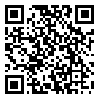Volume 16, Issue 38 (2-2021)
goljaam 2021, 16(38): 149-169 |
Back to browse issues page
Download citation:
BibTeX | RIS | EndNote | Medlars | ProCite | Reference Manager | RefWorks
Send citation to:



BibTeX | RIS | EndNote | Medlars | ProCite | Reference Manager | RefWorks
Send citation to:
Piri A, Hasanvand M K, Farhadiyeh M. Explaining the Safavid hunting ground Corner and Medallion carpet design, (case study: the Poldi Pezzoli Museum hunting ground Carpet).. goljaam 2021; 16 (38) : 8
URL: http://goljaam.icsa.ir/article-1-725-en.html
URL: http://goljaam.icsa.ir/article-1-725-en.html
1- PhD Candidate of Islamic Arts, Iranian Painting, Faculty of Art and Architecture, Tarbiat Modares University, Tehran, Iran.
2- Associate Professor, Faculty Member, Faculty of Art and Architecture, Tarbiat Modares University, Tehran, Iran
3- Carpet Designer and teacher, first class artist in the field of carpet design, Isfahan, Iran
2- Associate Professor, Faculty Member, Faculty of Art and Architecture, Tarbiat Modares University, Tehran, Iran
3- Carpet Designer and teacher, first class artist in the field of carpet design, Isfahan, Iran
Abstract: (3034 Views)
Hunting and animal’s combat design of animals in the Safavid era has been reflected in various compositions of carpet designs as they are combined with Floral, Medallion, and Corner and Medallion patterns. One of the significant examples of a hunting ground corner and Medallion carpet are the ones held in the Poldi Pezzoli Museum, Milan. In this carpet, hustling hunting scenes have been depicted. The present study aimed to explain the design method of this carpet. The research method was descriptive-analytical and the data were collected from library. The data were analyzed qualitatively using structural analysis method and based on the existing standards governing the design of Iranian carpets in the Safavid era. The results of the research indicated that this carpet has had a two-layer design. The first layer, designed in form of Corner and Medallion, has been performed by ¼, and by making minor changes, it becomes ½ and in the second layer the hunting scene added to design through ½. The elements used in this carpet's patterns include: Medallion, inscription, Upper-Medallion[1], corner, background, borders and hunting scene, as the latter plays a prevailing role on the carpet. The Medallion-bound line [2]is designed by way of 1/16, turning ¼ after three repetitions. The Medallion design was recessed or built-in. After the Medallion-bound line is completed, the inscription and the Upper-Medallion added as ½, with the same part used as the carpet corner and the background is decorated with Khatai motifs. This carpet has four rows of borders. The outer border and the main border are designed by reflective method and the two inner borders are designed by transfer method.
Article number: 8
Keywords: Safavid era, Carpet design method, Corner and Medallion, Hunting ground Carpet, Ghiyas-ol din Jaami Carpet
Type of Study: Research |
Received: 2020/10/1 | Accepted: 2022/02/19 | Published: 2022/02/19
Received: 2020/10/1 | Accepted: 2022/02/19 | Published: 2022/02/19
Send email to the article author
| Rights and permissions | |
 |
This work is licensed under a Creative Commons Attribution-NonCommercial 4.0 International License. |






